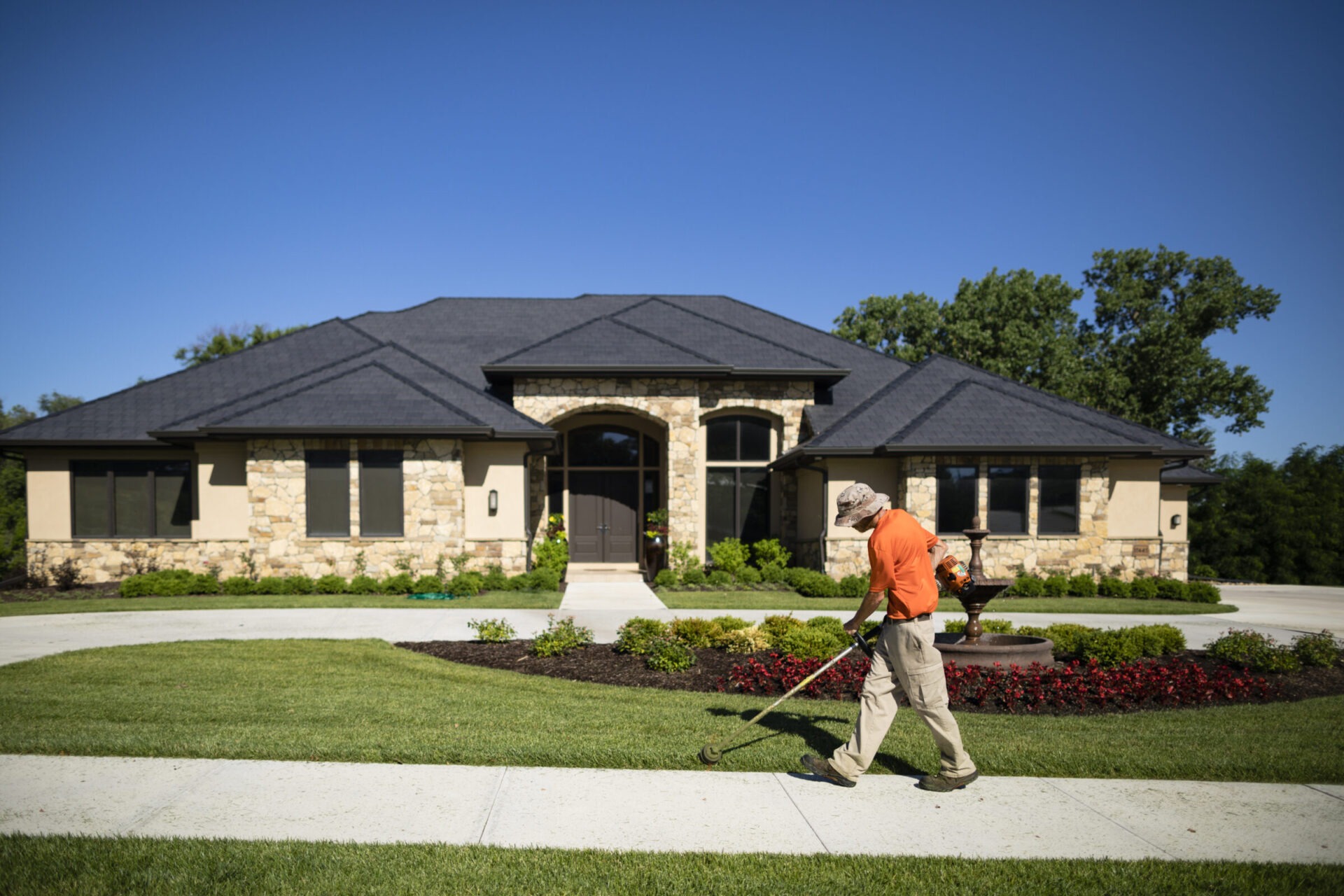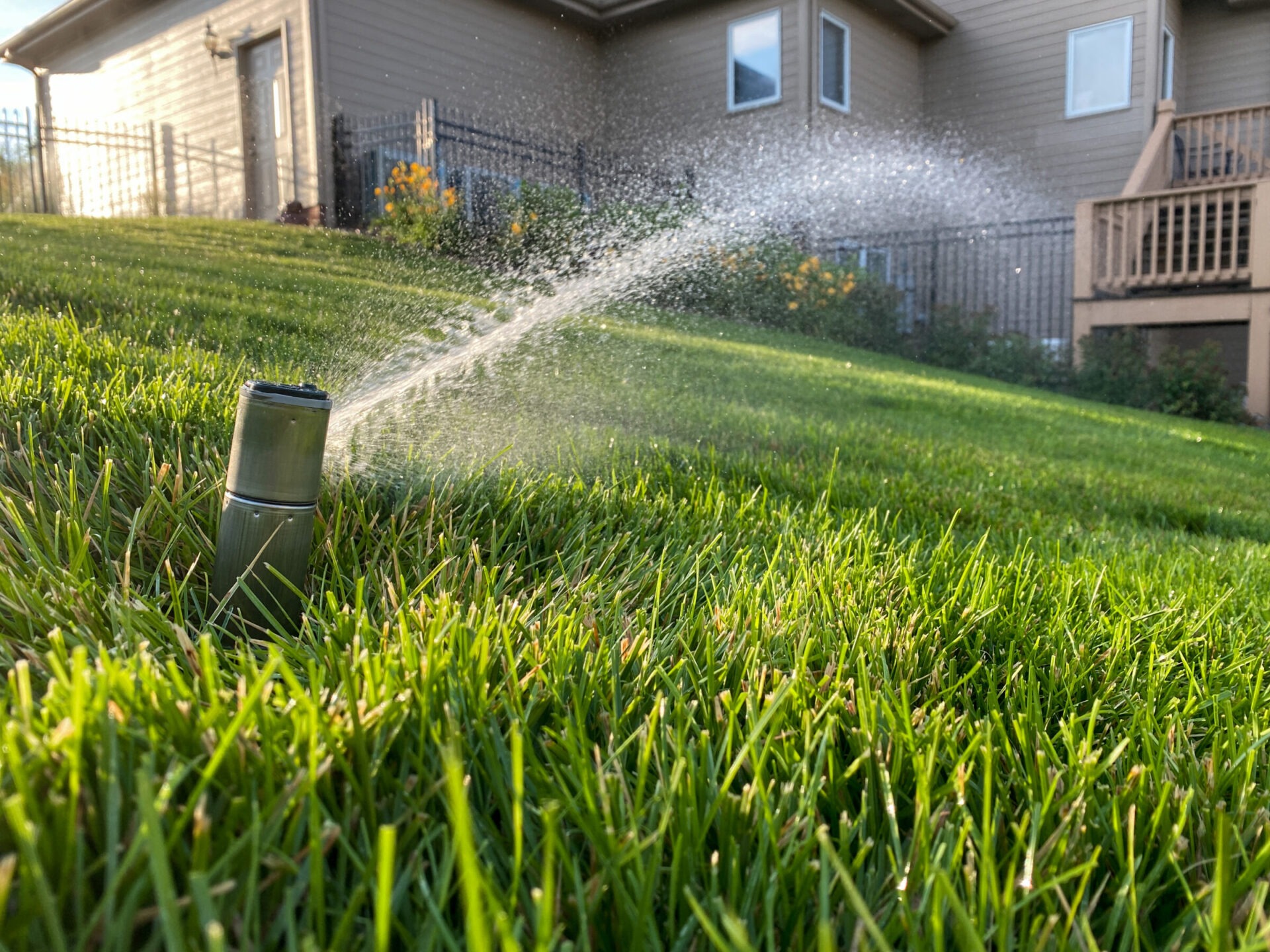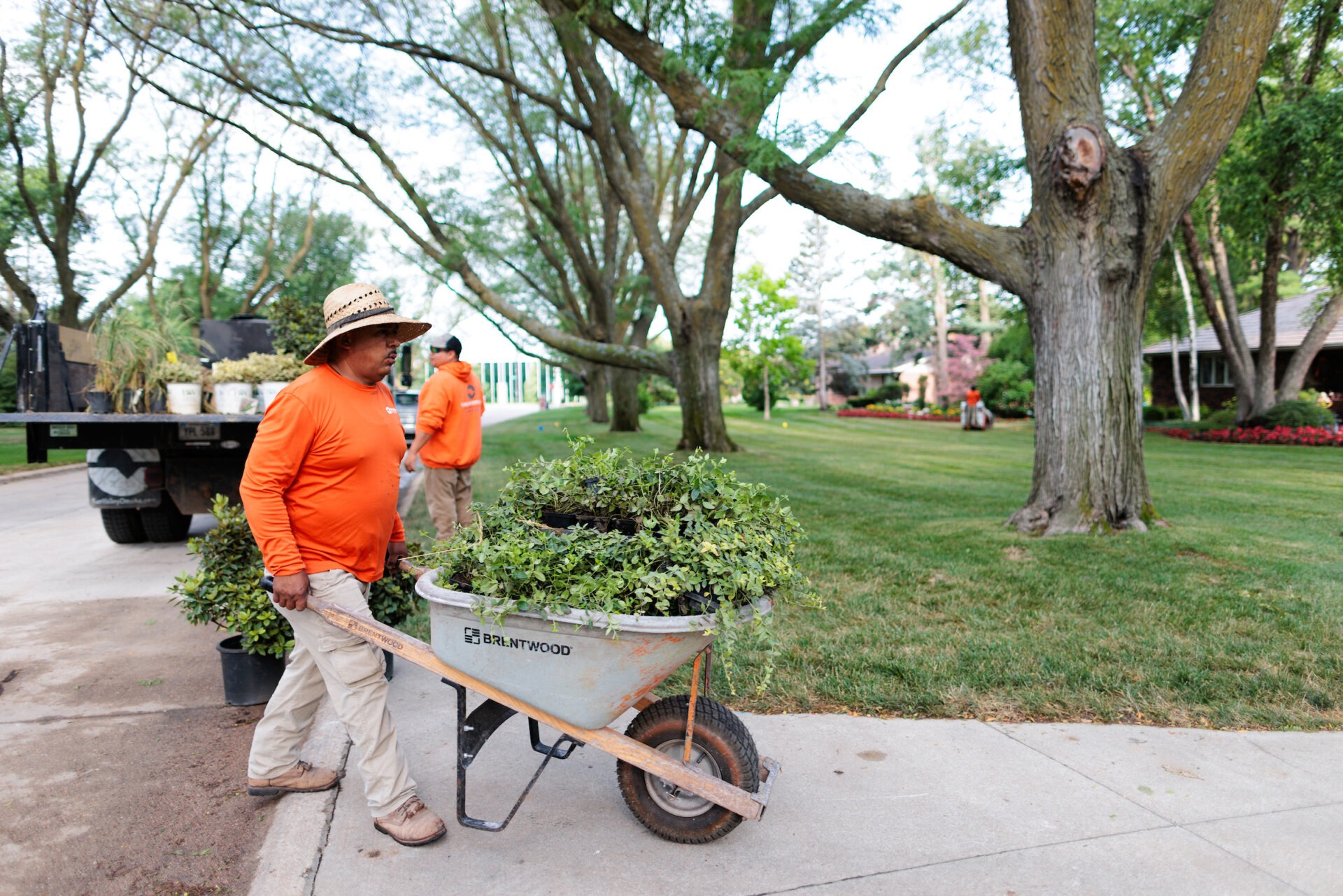Essential Fall Lawn Care Tips

Fall lawn care in Omaha is essential to ensure your grass not only recovers from the stress of summer but also thrives throughout the colder months. For homeowners, property managers, and commercial clients alike, the right approach to fall landscape maintenance sets your lawn up for long-term health and beauty. These essential tips will guide you through the best practices for lawn care during Omaha's autumn season.
Continue Regular Mowing

Don’t retire your mower as soon as autumn begins—your grass continues to grow actively during fall. Regular mowing is crucial for maintaining an ideal grass height, typically between 2.5 to 3.5 inches, helping your lawn to retain moisture and resist diseases. As temperatures start to drop, gradually reduce your mower's blade height for the last few cuts to prevent snow mold and matting under winter snow cover. Sharp mower blades are essential, ensuring clean cuts that foster healthier growth.
Mowing should be consistent, while still accommodating for weather conditions and growth rates. Mow during drier parts of the day to prevent the spread of fungal diseases and ensure that grass clippings are adequately dispersed. Proper mowing habits during fall can significantly boost your lawn's health come springtime.
Clear Fallen Leaves and Debris
One of the most critical fall lawn maintenance tasks is leaf removal, especially before you mow. A thick layer of leaves can suffocate your grass by blocking sunlight and trapping excess moisture, creating conditions conducive to mold and fungal diseases. Regular raking or leaf blowing is necessary to keep your lawn clear, preventing these issues.
Additionally, leaves and debris attract pests such as rodents and insects, causing further damage to your lawn and surrounding landscapes. Commercial properties must pay particular attention, as wet leaves can pose slipping hazards and create an unkempt appearance. Consider mulching leaves using a mulching mower, turning leaves into a beneficial organic fertilizer that enriches your soil naturally. This practice provides valuable nutrients to your lawn and helps insulate grass roots against freezing temperatures.
Aerate Your Lawn
Aeration is critical in fall, particularly after a busy summer season. Aerating involves perforating the soil with small holes, allowing air, water, and nutrients to penetrate deeply to the roots. Omaha lawns, often characterized by clay-heavy soil, particularly benefit from this practice as it alleviates compaction caused by foot traffic and dry conditions.
Aerate using manual tools or hire professionals equipped with powered aeration machinery. Areas receiving high foot traffic, such as pathways or recreational spots, benefit significantly from targeted aeration. If your lawn exhibits excessive thatch—a dense layer of dead grass between the soil and grass blades—consider dethatching alongside aeration. Removing this layer enhances nutrient uptake and supports healthier turf growth, creating ideal conditions for your lawn to recover and strengthen before winter.
Overseed to Fill Bare Spots
Autumn's moderate temperatures and ample moisture make it an excellent season for overseeding, especially for Omaha’s cool-season grasses such as Kentucky bluegrass, fescue, and perennial ryegrass. Overseeding addresses thinning patches and bare spots, significantly improving your lawn's density and resilience.
To maximize success, first aerate your lawn, creating the ideal environment for seeds to make direct soil contact. Spread seeds evenly across sparse areas and maintain consistent moisture until germination occurs. For larger bare patches, prepare the area by loosening the soil, adding topsoil if necessary, then spreading seeds and lightly covering with straw mulch to prevent erosion. Overseeding in fall ensures robust growth and reduces weed competition in spring.
Fertilize for Winter Resilience

Fall fertilization is often called winterization, as it prepares your lawn for winter dormancy and ensures vigorous spring growth. The ideal fertilizer for fall should be rich in potassium, promoting root strength and drought resistance vital for surviving Omaha's harsh winters. Moderate nitrogen content helps maintain healthy foliage without overstimulating growth, which could lead to winter damage.
Apply fertilizer in late autumn, ideally after your last mowing session. Ensure conditions are favorable (moist soil and dry grass) to optimize nutrient uptake and minimize runoff. Always follow manufacturer guidelines carefully to avoid over-fertilizing, which could harm your lawn and the surrounding environment. Proper fall fertilization gives your grass essential nutrients for winter storage, supporting robust regrowth as temperatures rise.
Tackle Weeds Effectively
Fall is the most effective season to control broadleaf weeds such as dandelions, clover, and creeping charlie. These weeds actively store nutrients in their roots during autumn, making them vulnerable to targeted herbicide treatments. Spot-treat persistent weeds with herbicide, ensuring thorough coverage to eradicate root systems.
Apply weed treatments in calm weather to avoid chemical drift, preferably after rainfall when weeds actively absorb nutrients. For eco-friendly options, consider manual removal, especially effective in fall when the soil is moist and weeds are easier to uproot. Effective fall weed control significantly reduces weed pressure in spring, leading to a cleaner, healthier lawn with fewer weeds to manage later.
Water Wisely and Winterize Irrigation

Adjust Watering Schedule: Your lawn’s thirst changes with the season. In the cooler, shorter days of fall, you won’t need to water as frequently as in the summertime. However, don’t shut off the sprinklers the minute temperatures drop – grass still needs moisture during fall growth. The key is to water deeply but infrequently. In Omaha, a good rule of thumb is to give your lawn a deep soak about once per week in autumn, rather than daily light sprinklings. Always aim to water in the early morning hours; this ensures the water soaks into the soil before midday sun (or evaporative winds) kick in. Avoid evening watering in fall, since sitting moisture overnight can encourage diseases as nights get cooler.
Watch the Weather: Keep an eye on rainfall. Fall often brings more rain, so you may be able to water less if nature is doing the job. But also watch for autumn dry spells – if you go a week or two with little rain and warmer-than-usual weather, continue to water so that your lawn doesn’t go into winter parched. If you’ve recently overseeded, consistent moisture is critical for those new grass seedlings to establish, so adjust your schedule accordingly (light daily watering of seeded areas until they germinate, then back to deep weekly watering).
Irrigation System Winterization: Before Omaha’s first freeze hits, be sure to winterize any irrigation systems. Turn off and drain your sprinklers or have a professional blow out the sprinkler lines with compressed air. This step is crucial – any water left in underground pipes or sprinkler heads can freeze and expand, cracking the equipment. Also, disconnect and drain garden hoses and cover your exterior spigots to prevent freeze damage. Property managers should double-check that all irrigation across their managed properties is properly shut down and winterized by late fall. By caring for your watering system now, you’ll prevent costly damage and ensure you can start watering on schedule next spring.
Consider Low-Maintenance Landscaping & Professional Help

Plan for Low-Maintenance Solutions: If fall yard work is feeling like a lot, it might be a good time to evaluate your landscape design with maintenance in mind. One way to cut down on lawn chores is to incorporate low-maintenance landscaping elements into your property. For instance, you could replace some turf areas with native plants or groundcover beds. Native plants are adapted to the local climate and often require less water and care. Groundcovers (like sedum or creeping thyme) not only add beauty but also reduce the need for mowing and help naturally suppress weeds. By planting in the fall, you’ll give these new additions a head start to establish roots by spring. Less lawn area and more hardy plants mean less mowing, fertilizing, and fussing for you in the long run.
Mulch and Hardscape: Another low-maintenance strategy is to use mulch and hardscaping to your advantage. Expanding your mulched garden beds or adding stone pathways can reduce the amount of grass you have to care for. A fresh layer of mulch in fall not only looks tidy but also insulates plant roots and cuts down on weeds (saving you work next year). Likewise, decorative rock or pavers can give high-traffic areas a neat appearance without any watering or mowing needed. The idea is to design a landscape that fits your lifestyle – if you’d prefer to minimize yard work, fall is a great time to implement changes that will make your maintenance easier moving forward.
Know When to Call the Pros: Of course, not everyone has the time or tools to perform all these fall lawn care tasks – and that’s okay! This is where professional landscape maintenance services come in. Consider reaching out to a local Omaha landscaping company (like Sun Valley Landscaping) for help with the heavy lifting. Our experienced team can handle everything from fall aeration and fertilization to leaf removal and winterizing your sprinkler system. For commercial clients and busy homeowners alike, having experts take care of fall lawn care ensures the job is done right and safely. You can ask for a seasonal clean-up service, which often includes hauling away leaves, trimming back perennials, and prepping the lawn for winter – all in one convenient package. Hiring professionals means you get to enjoy a neat, well-tended landscape without breaking a sweat, and you’ll know that your property is fully prepared for the colder months ahead.
Reliable Landscaping Maintenance in Omaha
Prioritizing essential fall lawn care practices significantly enhances your landscape’s resilience, beauty, and health. A well-maintained lawn prepared in autumn is better equipped to survive winter and flourish in spring. Whether handling tasks yourself or hiring professional assistance, investing in fall lawn care ensures your Omaha property remains inviting and impressive year-round.
Contact Sun Valley Landscaping to streamline your fall lawn care and keep your lawn looking its best.
Tags:

